
Violet Mix
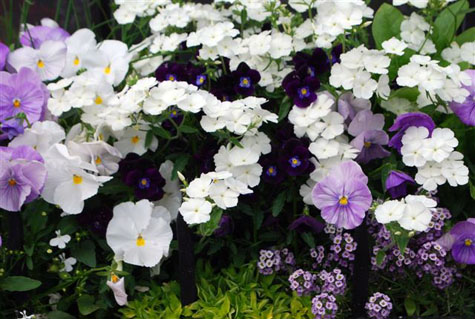
Violet Mix
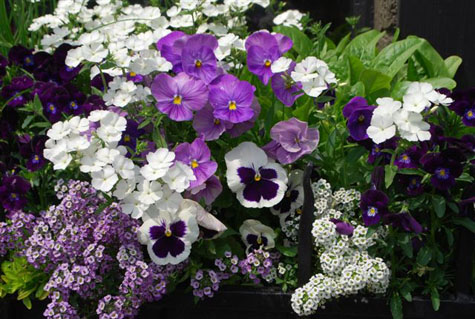
Violet Mix

Sweet Alyssum

Lilac

Sweet Alyssum

Phlox Divaricata "Lodden's Blue"
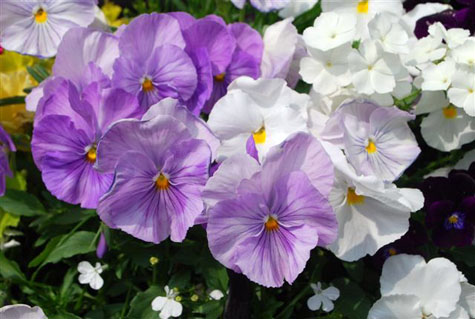
Pansy
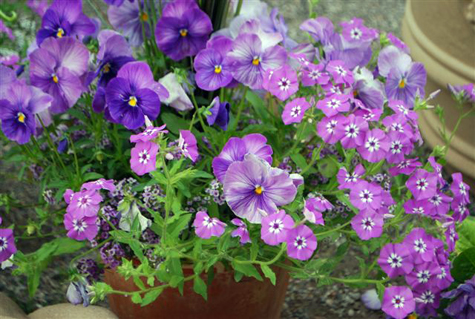
Purple Mix
Deborah Silver is an accomplished and experienced landscape and garden designer whose firm first opened its doors in 1986.

Violet Mix

Violet Mix

Violet Mix

Sweet Alyssum

Lilac

Sweet Alyssum

Phlox Divaricata "Lodden's Blue"

Pansy

Purple Mix
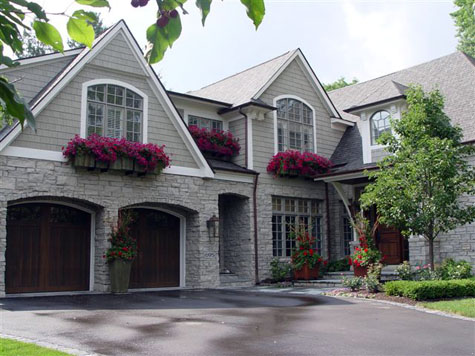
Window boxes have large areas for planting, which can give the impression of annuals in the ground-minus the turning of the dirt, the stooping and the stooping again to weed. They also put the action at eye level. Window boxes on a second story is a striking surprise. Sizing a window box appropriately is the toughest part. Plan carefully, so your boxes thrive.

I like window boxes to be sized generously in width. Sizing the box wider than the window puts the visual weight at the bottom, where it should be. A box narrower than the window makes the window look top heavy and oppressive-windows are large dark shapes during the day. �
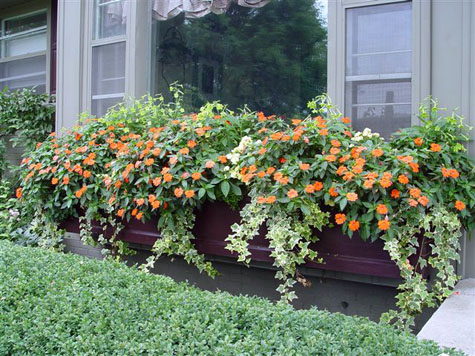
Window boxes are not just for French and English cottage style homes. A sleek contemporary box can compliment the architecture of a modern home. They provide great mass and substance in the horizontal plane. They have the added attraction of views from inside, as well as the outside.
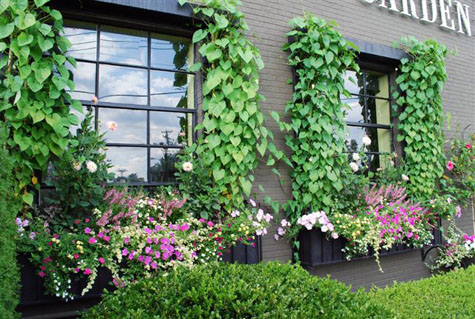
A very wide box invites planting tall annuals, even vines, which serve to frame the window. The large planting space allows you to showcase the relationship between a number of different plants. Boxes have the heart of a whole garden, in a smaller space.
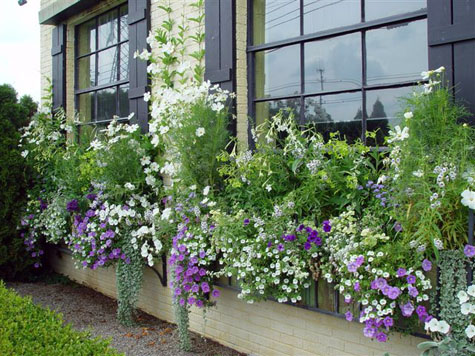
Many ready made window boxes are sized more to be convenient to load into your car, than convenient for good plant growth. Undersized boxes are the devil to keep watered, once the plants have rooted in well. These boxes are 11″ wide and 16″ tall-plenty of room for a soil mass that will retain moisture evenly, and allow for root growth. A window box that is 8″ tall and 10″ long will need succulents, as they do not root deeply, and they are happy in dry soil.

Window boxes have no need to be fancy, especially if your idea of a good one is profuse and spilling over with flowers. Luxuriant-I like the word, and the look. These boxes are made from a simple iron grillwork, and lined with galvanized sheet metal liners. Wood boxes will last much longer, if they have sheet metal liners. Wood that is constantly wet deteriorates quickly.�
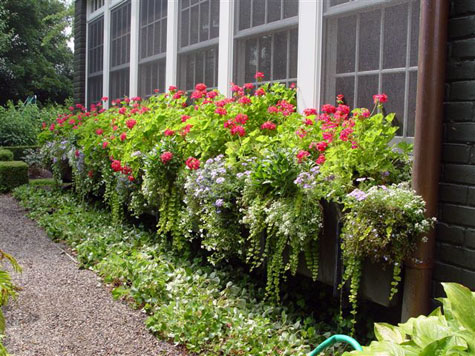
Wet soil is incredibly heavy; be sure the boxes are securely fastened to the wall. The weight issue is somewhat mitigated by the drainage material; I routinely fill the box at least half full with drainage material; bagged bark works well.
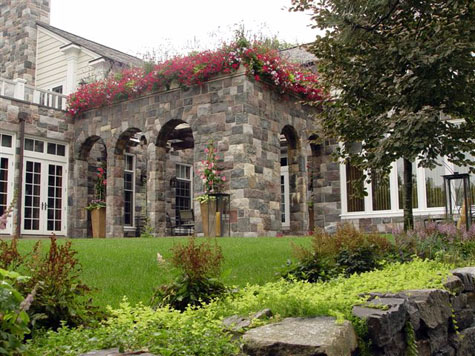
Not all boxes need to be attached to a wall. Boxes can be integrated into a pergola roof, or placed on top of a wall to good effect. Clear irrigation tubes can be run to them. This makes watering simple, as long as you experiment until you know how much time it will take to soak them. A plain sheet metal box will need reinforcement on the interior to prevent the metal walls from bowing out. I sometimes screw treated lumber to the inside to maintain a cleanly rectangular shape.
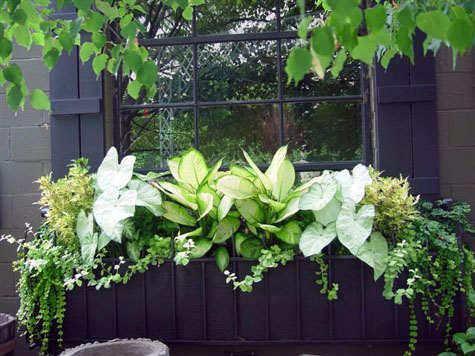
Window boxes are not just for sunny locations. The caladiums, dieffenbachia, and yellow coleus in this box light up a very shady spot. The trailing licorice is surprisingly tolerant of shade.�
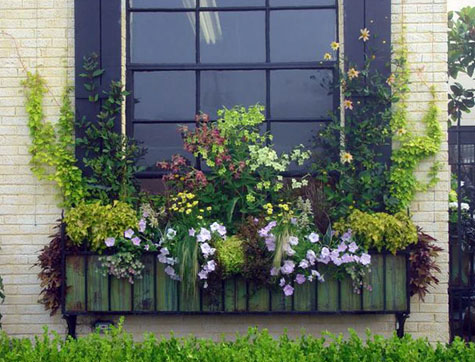
A great window box is rhythmic. Decide if you want the height in the middle, or at the ends. A uniform height is a more contemporary look. The colors of nicotiana-terra cotta, and 2 shades of lime, set the stage for this box. All the supporting cast plants repeat color, or contrast in texture. A lime green variety of hops is growing on wires outside the shutters. Wispy small growing grasses are great in boxes, as they are neither upright nor trailing. If you are after a tall middle, plant the center first, then work to the edges. If you are fond of symmetry, reverse the order of right half on the left.

This box, tucked neatly between dark stained shutters, makes the flowers, and shutters the center of attention. This arrangement of a formal box and equally formal shutters, and green and white planting is elegant, but lively. �
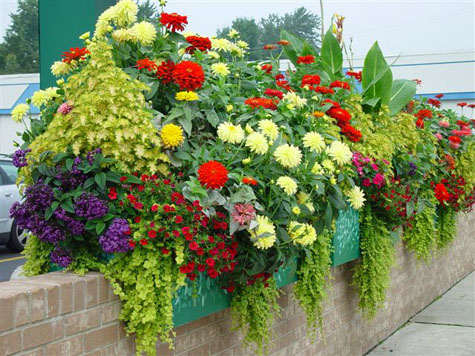
These boxes, specially constructed to sit astride a narrow brick wall, say welcome in a very big way. What a happy improvement over the wall.
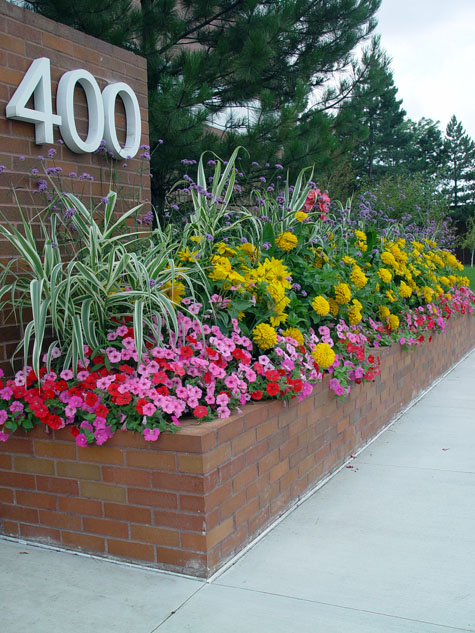 It’s such a good thing that shopping centers and the like plant fibrous begonias and impatiens, in vast quantities, so you don’t have to. The Victorian gardening era in England produced some very inventive schemes for bedding plants. Beautifully designed and executed, they made use of annual plants of compact habit and low maintenance. Many of them were representational in their design-the most familiar of these would be the bedding plant clocks. Only rarely do I see bedding plants done to this level. There are those who plant oceans of uniformly growing fibrous begonias, impatiens, dusty miller and so on, without much in the way of interesting design-just lots of color. I like color as well as the next person, but I am glad this way of planting is being done by others, so I don’t have to.
It’s such a good thing that shopping centers and the like plant fibrous begonias and impatiens, in vast quantities, so you don’t have to. The Victorian gardening era in England produced some very inventive schemes for bedding plants. Beautifully designed and executed, they made use of annual plants of compact habit and low maintenance. Many of them were representational in their design-the most familiar of these would be the bedding plant clocks. Only rarely do I see bedding plants done to this level. There are those who plant oceans of uniformly growing fibrous begonias, impatiens, dusty miller and so on, without much in the way of interesting design-just lots of color. I like color as well as the next person, but I am glad this way of planting is being done by others, so I don’t have to.
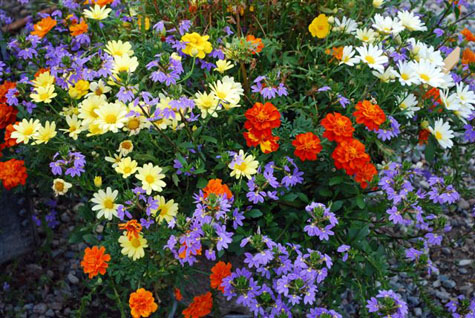
I like annuals in the ground that mix shapes and colors in a dynamic, airy way. I like annuals in the ground that are unexpected. Some in ground annuals can be designed to give the impression of a perennial garden-with the added bonus of a very long season of bloom.
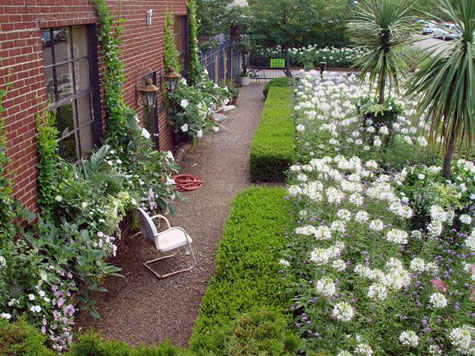
Big growing annuals are often passed by in garden centers, as they take time to get to blooming size, and do not show well in a cell pack, or 4” pot. Zinnias, cleome, cosmos, verbena bonariensis, and nicotiana alata varieties fall into this category.
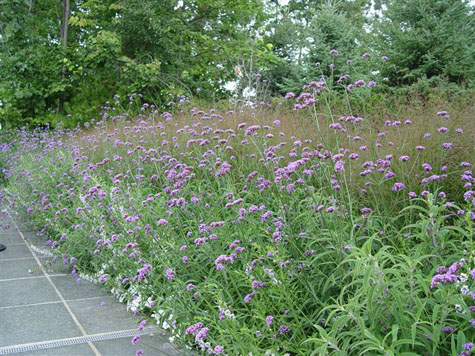
But I find their old fashioned grace and size can make for a stunning annual display. Even shady annual areas can be enlivened by the addition of coleus, or tropicals; no shade garden is restricted to begonias and impatiens.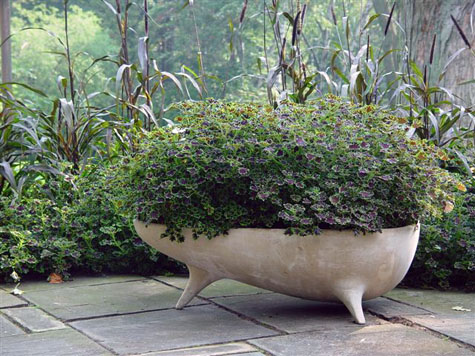
No doubt some very formal, and some contemporary annual plantings ask for a restricted plant palette, but I like to see this done on purpose.
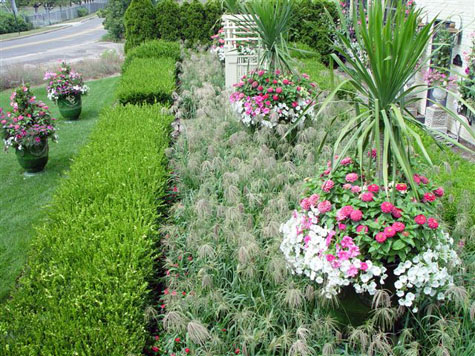
If you garden is cottage-style, grasses, or the wispy textured verbena bonariensis added to the annual mix is charmingly meadow-like.
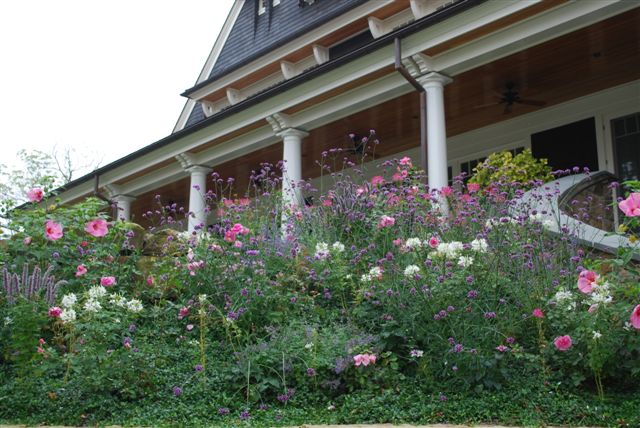
Grey plectranthus, the broad-leaved cirrus dusty miller, or chocolate sweet potato vine, grown in ground, is cool and contemporary looking.

Bold growing annuals in bold colors warm up, and loosen up a space. Zinnias, dahlias, green-eyed daisies, and giant marigolds read well from a distance. One of my favorite annuals, nicotiana mutabilis, is a cloud of white and pink when planted in masses; try interplanting a short growing annual to give color and interest at ground level.
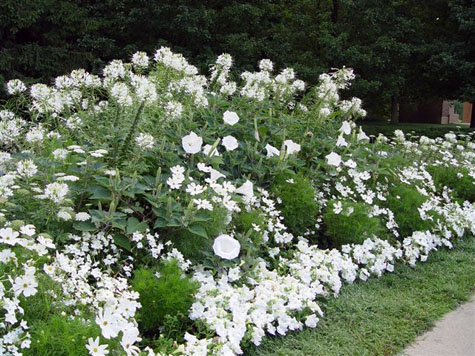
There is another very good reason to plant mixed annual beds-the summer weather. Some years impatiens grows poorly. If that’s all you grow, it’s a poor year for your annual garden. If you have mixed in other annuals, perhaps not all is lost. A mix which highlights the color, textures, and volumes of annual plants will keep your interest over the course of the season. A mix of heights gives you color interest from top to bottom. Check out the annual flowers at your local nursery that are green right now, or unknown to you, or unusual to your eye; they may be promising additions to your summer annual garden.
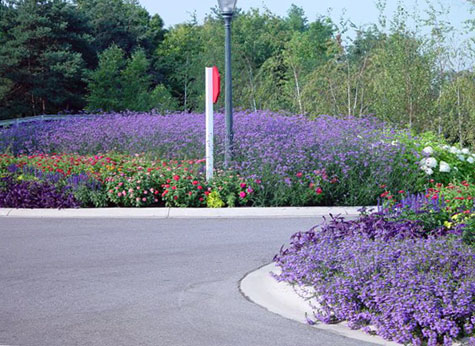

Beautiful pots are not only about beautiful plant material, designed and planted in an interesting, or lovely, or architectural way, and well grown. There is the matter of the pots themselves.

Pots could be loosely defined as anything that holds soil, and drains water away. Once in my twenties I planted four plastic garbage cans (I drilled holes in the sides and bottom) and planted all my vegetables and herbs in them. My first and only concern was my tomatoes, and what I was growing with them for my salads. It was easy to weed, groom, and pick, standing up.
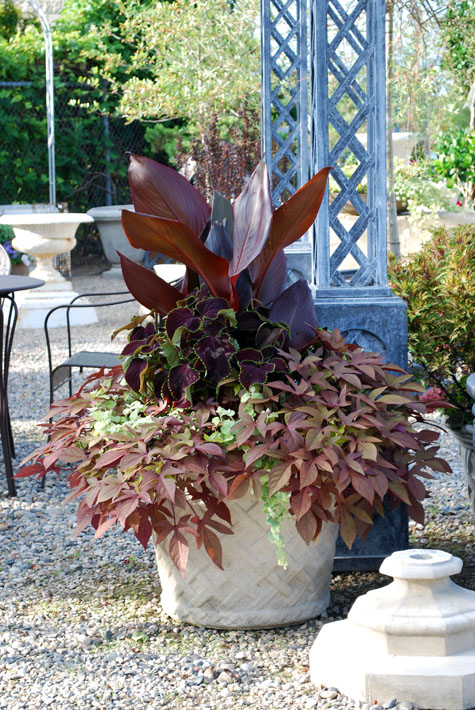
I have a much different view of pots now. They are an important sculptural element of the planting as a whole. They make suggestions about what would look good planted in them, if you ask. They make themselves at home in your landscape. Many are as beautiful empty as they are planted; some containers need planting.
 Once you plant an old galvanized bucket with geraniums and strawberries, the eye sees that object in a different way.
Once you plant an old galvanized bucket with geraniums and strawberries, the eye sees that object in a different way.
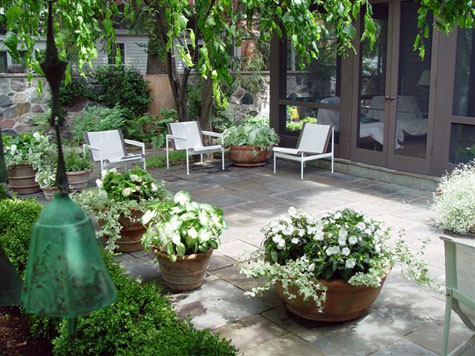
Some pots I am not fond of. Most fiberglass and plastic pots have a visually unpleasant surface-no romance there. These I avoid. I like genuine materials. I don’t think this makes me a pot-snob. I have seen vintage baskets and buckets, wood boxes, stainless steel milk pails, and livestock troughs completely transformed visually by someone’s idea to plant them.
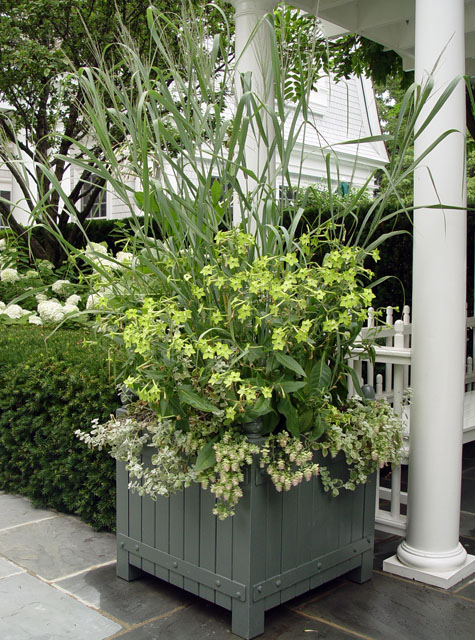
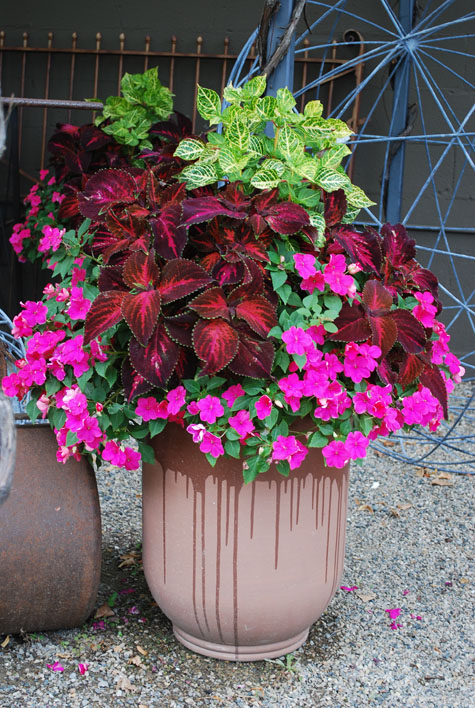
If I had to name a favorite, my Compton Pottery snake pot, made during the arts and crafts period in England would rank high on my list.
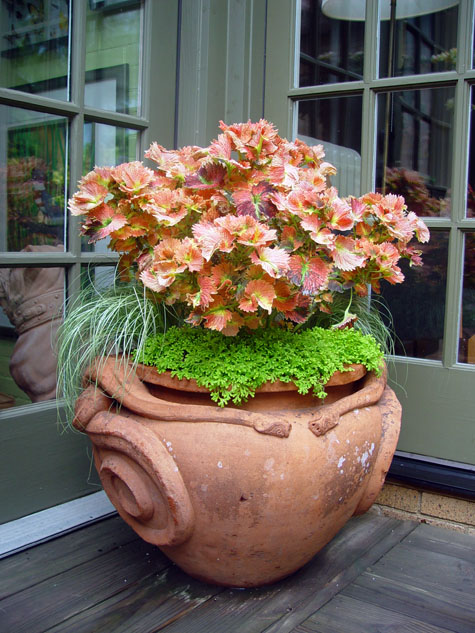 It was a 50th birthday present, from me, to me. Every time I look at it, I feel the history of the object, and my own garden making. It is the emotional equivalent of a trip to Europe, touring other gardens, whose pots tell me something about the gardeners who planted them.
It was a 50th birthday present, from me, to me. Every time I look at it, I feel the history of the object, and my own garden making. It is the emotional equivalent of a trip to Europe, touring other gardens, whose pots tell me something about the gardeners who planted them.

Deborah Silver is a landscape and garden designer whose firm, Deborah Silver and Co Inc, opened its doors in 1986. She opened Detroit Garden Works, a retail store devoted to fine and unusual garden ornament and specialty plants, in 1996. In 2004, she opened the Branch studio, a subsidiary of the landscape company which designs and manufactures garden ornament in a variety of media. Though her formal education is in English literature and biology, she worked as a fine artist in watercolor and pastel from 1972-1983. A job in a nursery, to help support herself as an artist in the early 80’s evolved into a career in landscape and garden design. Her landscape design and installation projects combine a thorough knowledge of horticulture with an artist’s eye for design. Her three companies provide a wide range of products and services to the serious gardener. She has been writing this journal style blog since April of 2009.
Copyright © 2025 · Deborah Silver & Co. · Detroit Garden Works